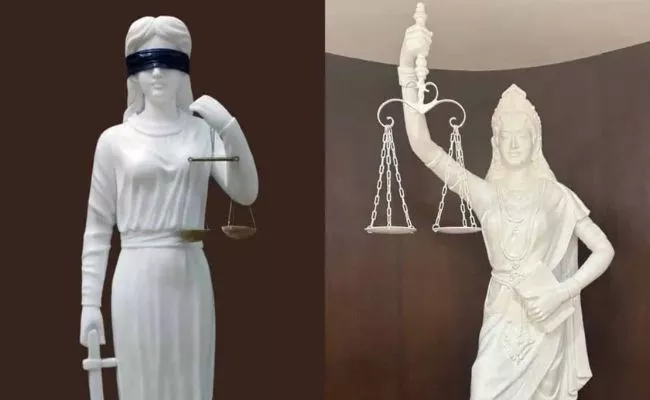Protests erupt outside Kasba Police station as 3 arrested in alleged Kolkata college gang rape
.gif)
.gif)

The Supreme Court of India has taken a symbolic yet powerful step by unveiling a redesigned version of the iconic 'Lady Justice' statue, reflecting the judiciary’s evolving outlook on justice. Traditionally depicted with a blindfold and a sword, the new statue features 'Lady Justice' with open eyes and the Constitution of India in place of the sword, marking a departure from colonial-era representations and embracing a distinctly Indian perspective on justice.
Chief Justice of India (CJI) D Y Chandrachud, who presided over the unveiling, stated that the new statue signifies a justice system that is not blind but sees everyone equally. The removal of the blindfold, long associated with impartiality, suggests a shift towards a justice system that is aware, vigilant, and inclusive. As CJI Chandrachud explained, “The law is not blind; it sees everyone equally,” underscoring the judiciary’s commitment to ensuring equality and fairness for all under the Indian Constitution.
The statue's open eyes replace the symbolic blindfold that previously conveyed impartiality, introducing a new interpretation where justice is informed and perceptive. Furthermore, the replacement of the sword with the Constitution represents a fundamental shift. Historically, the sword symbolized authority and retribution, but the Constitution, now placed in its stead, embodies the principles of rights, equality, and fairness that govern the judiciary's role in modern India.
A senior official from the Chief Justice’s office commented, “The sword is a symbol of violence, but courts deliver justice according to constitutional laws. The new statue reflects this approach.”
The redesign is part of a broader movement by the Indian judiciary to break free from colonial legacies. Recent reforms, such as the proposed Bharatiya Nyaya Sanhita (BNS), aimed at replacing the British-era Indian Penal Code (IPC), reinforce this shift. CJI Chandrachud has been vocal about moving away from British-era symbols and laws, emphasizing that the judiciary’s role is protective of constitutional rights, not punitive.
“Justice Chandrachud believes that India should move forward from its British legacy and that the law is never blind; it sees everyone equally,” noted a source close to the Chief Justice. The redesigned 'Lady Justice,' now standing in the Supreme Court’s judges’ library, reflects this philosophy, placing the Constitution at the heart of the justice system.